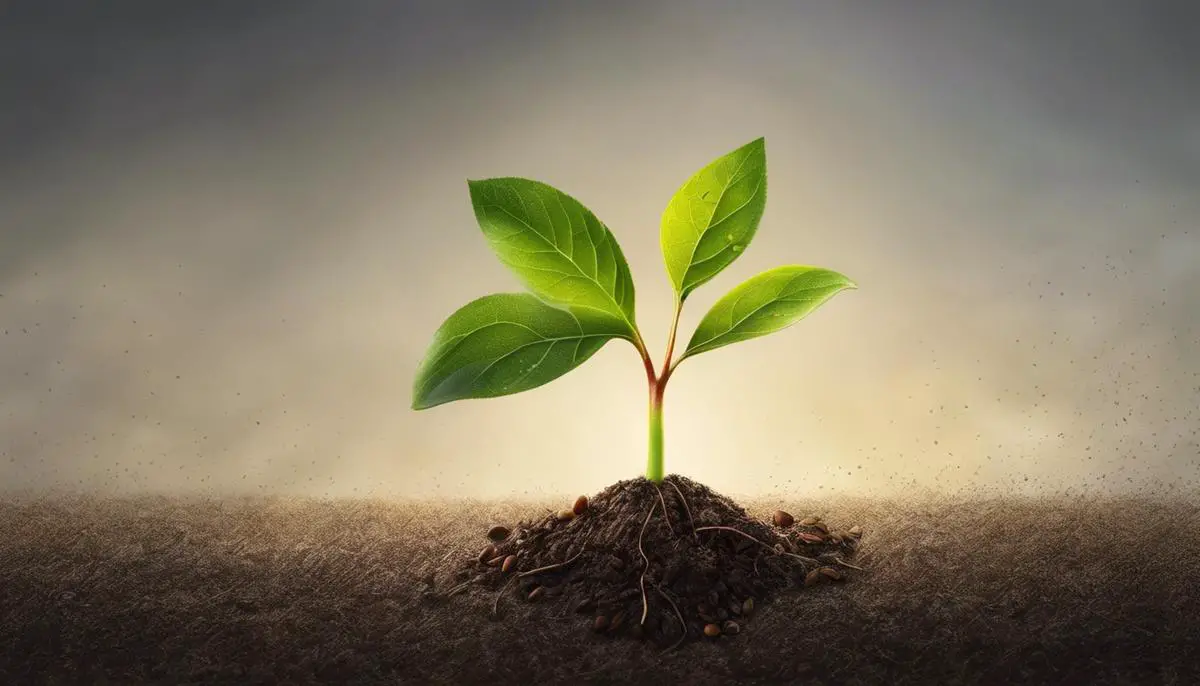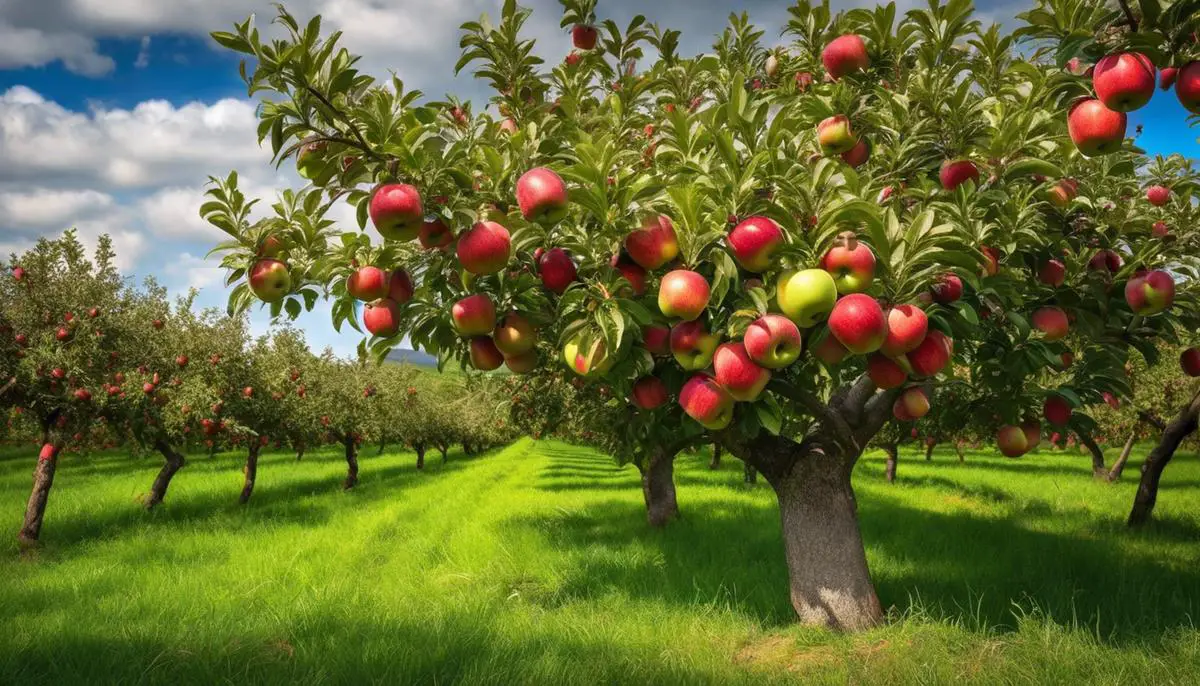Apple trees are a blessing from nature that not only provide delicious fruit, but are also a remarkable addition to any home garden. The process of growing an apple tree from a seed may be a bit complicated, but with the right information, understanding, and patience, it is by all means feasible. This treasure trove of knowledge encapsulates everything one would need to know, beginning with the preparation and planting of the apple seed, to nurturing the seedling, and eventually transplanting a young, thriving apple tree. An integral part of this process is understanding the phenomenon of stratification, an essential cold treatment for breaking the seed’s dormancy. Let’s journey together through the rewarding process of growing an apple tree, giving us both the literal and figurative fruits of our labor.
Preparing and Planting the Seed
How to Cultivate Your Own Orchard: Preparing and Planting Apple Seeds
Discover the joy of growing your own fruit trees right in the backyard. As someone passionate about the crafts, growth, and surprises of gardening, there’s no greater pleasure than watching an apple seed sprout into a strong, healthy tree. Becoming the proud parent of your own little orchard can be both a fulfilling hobby and a beautiful addition to your home. If you’ve ever wondered how to start this rewarding journey, you’re in the right place. Let’s dive right into the details on proper preparation and planting of apple seeds.
The first step is successfully extracting the seeds. To do this, split a ripe apple in half and carefully remove the seeds using a knife or a spoon. Be cautious not to damage these precious little kernels.
Next, comes the crucial process of stratification. It’s a technique that induces dormancy in seeds, making them ready for germination. Collect the seeds in a damp paper towel, fold it gently, and put it in a ziplock bag. It’s important to keep this package in the refrigerator for around six weeks. Remember to maintain the paper towel’s dampness for the entire duration – not soaking wet, but consistently moist.
Once the stratification period is up, it’s time to plant. Prepare small pots with fertile, well-draining potting soil. Make a half-inch deep hole in the soil and gently drop your seed into it. Cover the seed with soil, ensuring that it is not exposed to daylight.
Nutrition is as pivotal for plants as for humans, and apple seeds are no exception. Begin by watering the soil – but remember, moderation is key. Overwatering can lead to a wilted sapling, while under-watering may deprive the seedling of the moisture it needs. Check the moisture daily, adjust the watering as applicable and avoid letting the soil dry out entirely.
The location is equally important for the young saplings. A sunny window sill or under grow lights where the seedlings get ample sunlight is perfect. The warmth from the sunlight aids in the germination process.
In about a week or two, you will notice a green sprout peeking through the soil. This is your apple tree in its initial state. Over time, with judicious watering, the right amount of sunlight, and a bit of patience, the sapling will grow into a young, robust apple tree.
Gardening demands patience, but the rewards are wholesome and fulfilling. Enjoy watching your apple seed grow into a young sapling then into a full-fledged tree bearing its own fruits. It’s fascinating to watch nature work her magic. Remember, gardening is a journey rather than a destination, and what a thrilling journey it is to cultivate your own little orchard!

Caring for the Seedling
Continuing our gardener’s journey, once you’ve dotted the ground with your apple seeds and watched in anticipation as green sprouts emerge from the soil, your job as caretaker of these young saplings has only just begun. Apple seedlings require meticulous care, prevalent attention, and a dollop of love to transform into fruitful trees. Let’s delve straight into the essential tips to ensure a fruitful journey from a grown sprout to a productive apple tree.
First, let’s talk sunlight. Your apple sprout cannot become an apple tree without an ample amount of sunlight. Sunlight is a primary factor in photosynthesis, the process where plants make food for themselves. Your young apple sprouts should ideally receive six hours of direct sunlight each day. If you started off your seeds indoors, once they sprout, it’s time to introduce them gradually to the outdoor environment. This process, termed hardening off, involves placing your sprouts outside initially for a few hours and gradually increasing the duration.
Second in line is your battle against bugs and pests. These critters can cause havoc to your sprouting apples. Regularly inspect your saplings for any signs of insect infestation. These signs can include holes in leaves, discoloration, or wilted vegetation. Keep some organic pest-control methods handy, or introduce beneficial insects like ladybugs to your orchard to control the pests naturally.
Next up: pruning. While significantly beneficial for more established apple trees, young saplings can also prosper from a light pruning. However, the key here is moderation. Too much pruning can hinder the growth and development of the tree. A general rule of thumb is to trim any dead, diseased, or crossing branches. This helps your sapling conserve energy and focus more on healthy growth.
Heat damage, particularly in dry climates, can wreak havoc on young apple trees. Forestall harm by wrapping the base of your sapling with a tree wrap or a piece of burlap; thus, protecting the tender trunk from sun scorch.
Last, but certainly not least, feeding your apple saplings. While a fertile soil mix provides a strong start, ongoing nutrition is still required. Organic material, such as compost or manure, provides a slow-release source of nutrients. Introduce a balanced tree fertilizer that takes care of all necessary minerals to help out your growing friend.
All of these steps combine to ensure your sprouted seeds grow well, flowering into abundant, fruit-bearing apple trees. Remember, it’s a labor of love to bring an apple tree to maturity, and the result is a bounty from your own backyard, each fall, rewarding your time, skills, and dedication. The care you provide for these sprouts in their early stages mirrors your passion for gardening, and it is this unrelenting adoration for your hobby that churns unending rewards – a flourishing orchard.

Transplanting and Pruning an Apple Tree
Once your apple sapling has been nurtured from seed, comprehending the steps of transplanting and pruning becomes pivotal for its successful cultivation, leading to optimal growth and bearing of the highly-anticipated fruitful bounty.
Transplanting, in essence, is primarily about granting your apple sapling the freedom to expand and flourish. As the roots of this young tree begin to peek from underneath the pot, recognizing it’s time to transplant is straightforward. Spring, when the sapling is still dormant, is generally the ideal time for this step.
To start, scout out an appropriate location in your garden, keeping in mind that apple trees thrive best with plenty of sunlight and well-drained, fertile soil. Dig a hole that’s twice the size of your apple sapling’s root mass to ensure its roots can spread out without resistance. Tending to the roots gently, remove the sapling from its pot, ensuring not to disturb them too hastily and risk damage.
Place the young apple tree in the hole mindfully, making sure the root ball is level with or slightly above the ground. Backfill the hole with the excavated soil, firmly patting down to remove any air pockets, and water thoroughly. To promote healthy and speedy growth, consider adding a layer of organic mulch around the base of the sapling, taking care to avoid direct contact with the tree’s trunk.
Success in this transplanting phase sets the stage for your apple tree’s growth over the coming months and beyond! However, the journey doesn’t end here. As the tree grows larger, the need for pruning comes into the spotlight.
Perform pruning typically during late winter or early spring, when the tree is still dormant. Note that the objective of pruning is essentially to allow sunlight and air to penetrate the canopy, making the tree more resistant to diseases and encouraging the growth of stronger, high-quality fruit-bearing shoots.
Start by removing any dead, diseased, or severely damaged branches using clean, sharp pruning tools. Always make your cuts just above an outward-facing bud to encourage growth outward and upward rather than towards the center of the tree.
Next, manage the size and shape of the tree by trimming back overly long branches and those that cross or rub against each other. To allow ample light penetration and ventilation, work on thinning the tree’s crown by removing select branches. Practicing this will encourage a sturdy and well-balanced apple tree while also discouraging the spread of potential diseases.
Although it may seem counterproductive, this form of tender loving care actually stimulates productive growth! Just remember, moderation is key: Pruning should never remove more than 25% of the tree’s total leaf-bearing crown in a year.
Through precise transplantation and prudent pruning, your apple tree is now well on a promised path towards optimal growth. This process serves as an invaluable lesson in the alleviating art of nurturing nature that hobbyist gardeners adore so ardently.
As your apple tree grows year by year, remember these simple instructions, because an apple tree is more than just a flavorful feast for future pies; it’s the embodiment of the legacy you’re growing! From seed to sprawling boughs heavy with nature’s bounty, every step is a testament to your nurturing, diligent care, and relentless love for this gratifying hobby. Cherishing the process empowers you with each delicious apple harvested!

Apple trees, with their fluttering leaves and hearty fruit, are tangible symbols of resilience and growth. They remind us that, with care and patience, a simple seed can be cultivated into something much larger than its humble origins. In learning to prepare, plant, raise and transplant an apple tree, you become not just a gardener, but a curator of nature’s art. From understanding the seed’s need for the winter’s chill during stratification, to identifying the signs of a healthy seedling and mastering the art of transplanting and pruning, you become privileged with a unique knowledge that transcends traditional apple cultivation. So, continue tending to your apple trees with attentiveness, understanding, and love. Guided by the wisdom accumulated in this process you, too, can grow much more than just apples; you can grow a legacy.